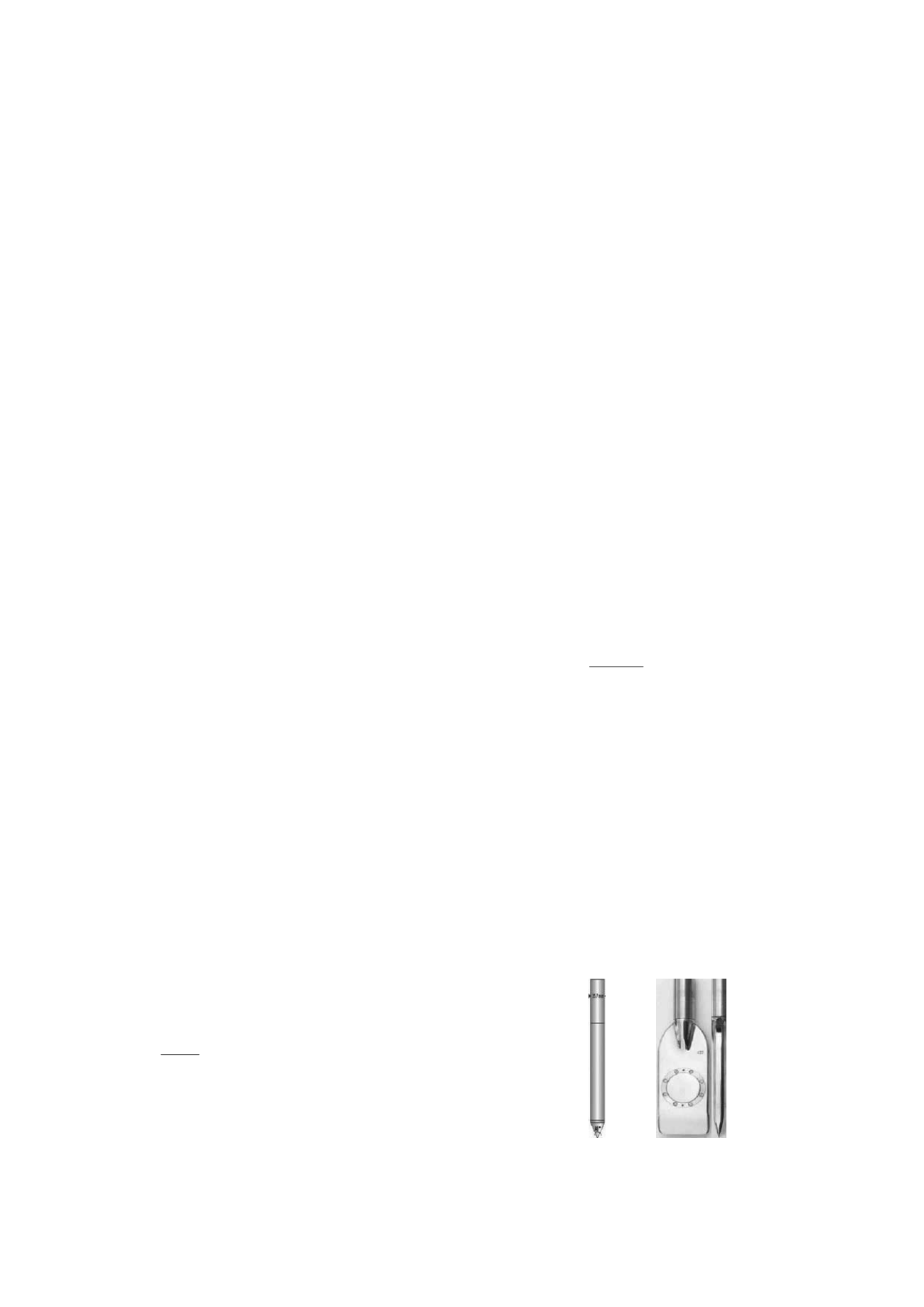
1337
Simultaneous interpretation of CPT/DMT tests to ground characterisation
L'interprétation simultanée des essais CPT/DMT pour la caractérisation du sol
Rabarijoely S., Garbulewski K.
Department of Geotechnical Engineering, Warsaw University of Life Sciences, Poland
ABSTRACT: This paper addresses the simultaneous interpretation of two well known in situ tests, namely CPT and DMT, to
characterize the geotechnical conditions, particularly the stress history of clay sediments. The CPT/DMT tests had been carried out in
order to recognize the geotechnical conditions in the foundations of design buildings at SGGW (WULS) Campus in Warsaw. The data
for two layers of glacial boulder clays have been analysed simultaneously using CPT and DMT tests. Based on the results of analyses
new formulas for determination of the OCR have been developed. The suggested relationships should be considered in future analyses
for their improvement.
RÉSUMÉ : Cet article traite de l'interprétation simultanée de deux essais in situ bien connus, à savoir CPT et DMT, pour caractériser
les conditions géotechniques, en particulier l'histoire des contraintes de sédiments argileux. Les essais CPT/DMT ont été réalisés dans
le but de reconnaître les conditions géotechniques pour le dimensionnement des fondations des bâtiments SGGW (WULS) Campus à
Varsovie. Les données de deux couches d'argiles glaciaires ont été analysées simultanément en utilisant les essais CPT et DMT. Sur
la base des résultats des analyses, de nouvelles formules pour la détermination de l'OCR ont été développées. Les relations proposées
devraient être pris en compte dans les analyses futures en vue de leur amélioration.
KEYWORDS: ground characterisation, CPT/DMT tests, join interpretation
1 INTRODUCTION
In engineering practice the cone penetration and dilatometer of
Marchetti tests (see Figure 1) are commonly recommended to
identify the geotechnical conditions for design structures
(Lutenegger and Kabir 1988, Briaud and Miran. 1991, Lunne
et al. 1997, Marchetti 1980). Although the CPT/DMT tests have
been used for over 30 years in the same purposes, generally to
recognize geotechnical condition in ground (Robertson 1990,
Młynarek 2007), to date relatively little published regarding join
interpretation (Mayne and Liao 2004, Robertson 2009). One of
not numerous comparison between measured DMT parameters
(I
D
, K
D
, and E
D
) with depth and predicted parameters using the
CPT at Moss Landing site (California) is showing in figure 2
(Robertson 2009). This site provides a good test for the
proposed correlations since the soils range from soft to firm clay
and loose to dense sand. The site is composed of about 2.6 m of
silty sand to silt over about 4.4 m of sand. Below the sand is a
deposit of firm plastic clay extending to a depth of 13.4 m. The
ground water level is at a depth of about 2.2 m below ground
surface but fluctuates somewhat with the tide. After an analysis
of CPT/DMT correlations Robertson concluded that horizontal
earth pressure index K
D
from DMT tests correlate to normalized
cone resistance (q
c
- σ
v0
)/σ’
v0
and proposed formula as follows:
80
80
.
'
vo
vo c
D
q .
K
(1)
Knowing the horizontal index K
D
from DMT test and
normalised cone resistance, the overconsolidation ratio OCR
can be obtained using following formulas (Marchetti 1980,
Robertson 2009):
561
.
D
K 0.5
OCR
(2)
251
240
.
'
vo
vo
t
q .
OCR
(3)
According to Robertson (2009) the resistance of cone q
c
can be
determined based on the following equation:
vo
1.25
D
'
vo
c
K .
q
251
(4)
This paper presents the CPT and DMT tests carried out in
order to recognize the geotechnical conditions for the design
structures in frame of the SGGW (WULS) Campus
development. Based on the results obtained from the extensive
research (Rabarijoely et al. 2011) the relationships between
CPT and DMT tests have been developed. For the determination
of the cone resistance q
c
new procedure was developed
considering dilatometer index of horizontal stress K
D
. Also, for
determination of K
D
index new procedure was proposed based
on the cone resistance q
c
. Moreover, the simultaneous
interpretation of CPT/DMT tests was applied to determine the
overconsolidation ratio of clay sediments.
a) b)
Figure 1. View of CPTu tip (a) and DMT blade (b) actually used in
geotechnical investigation


